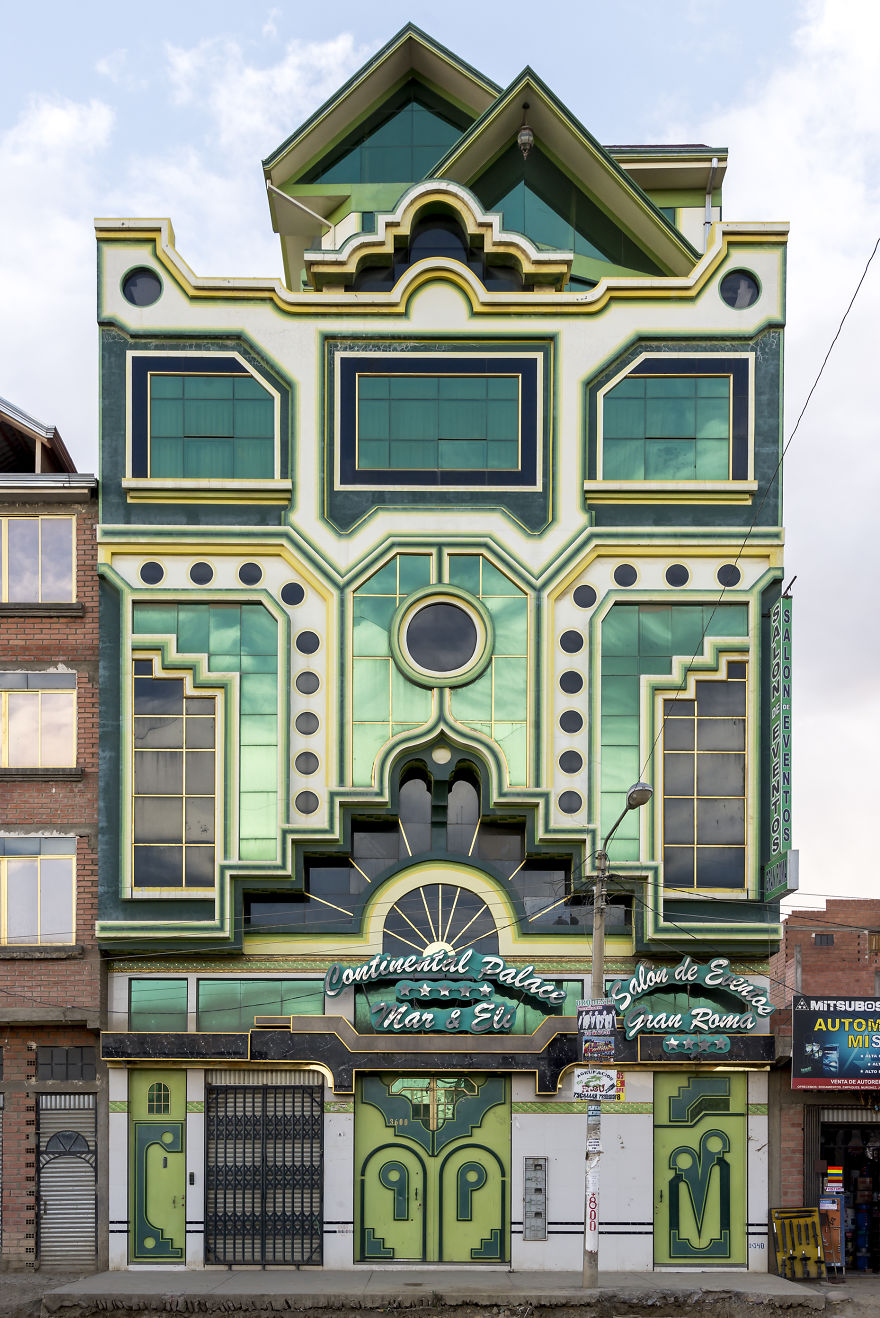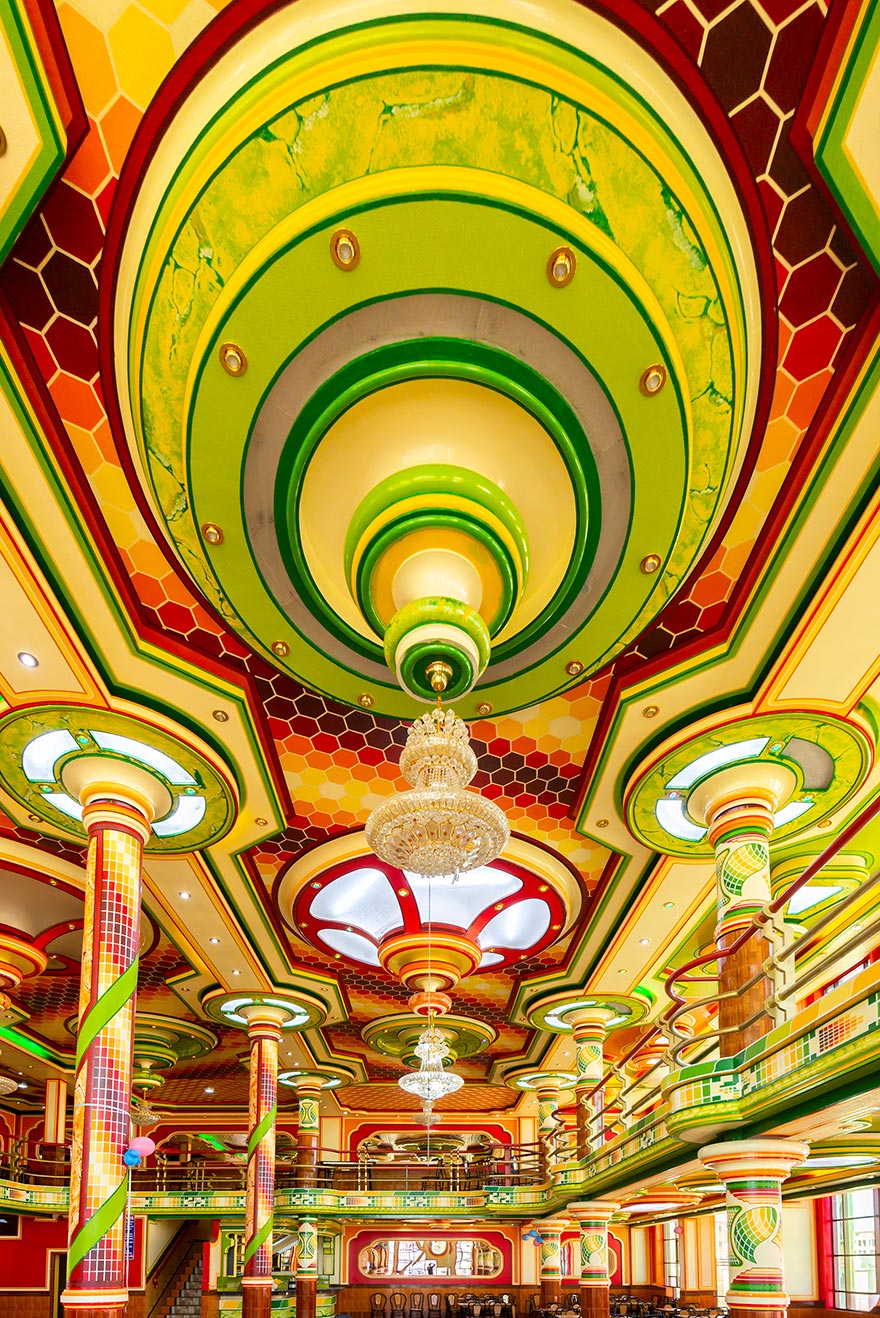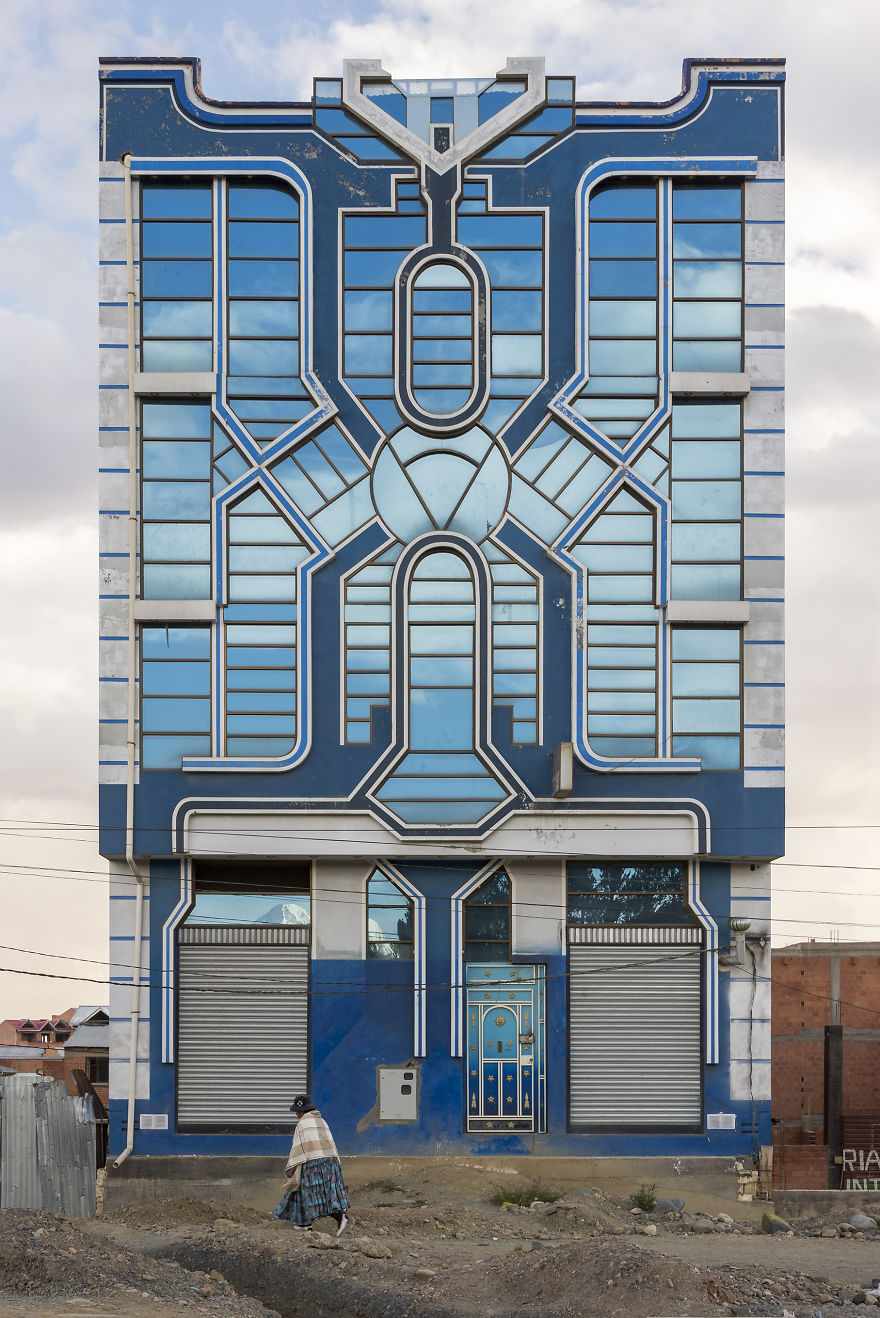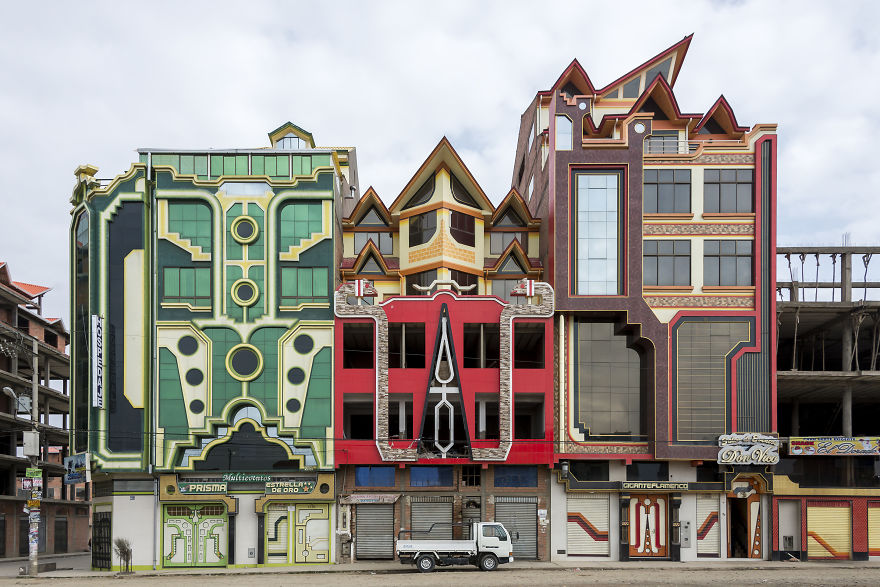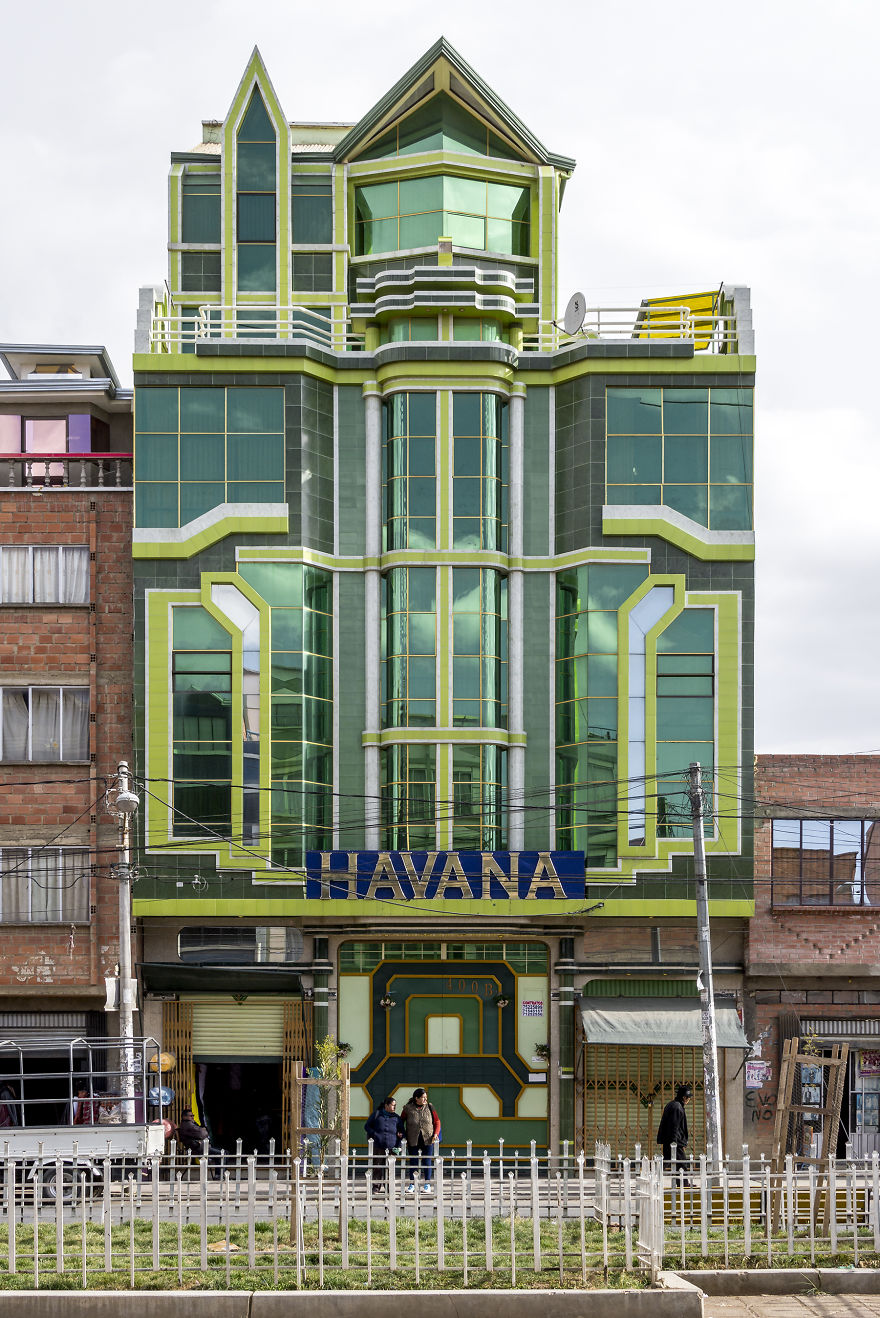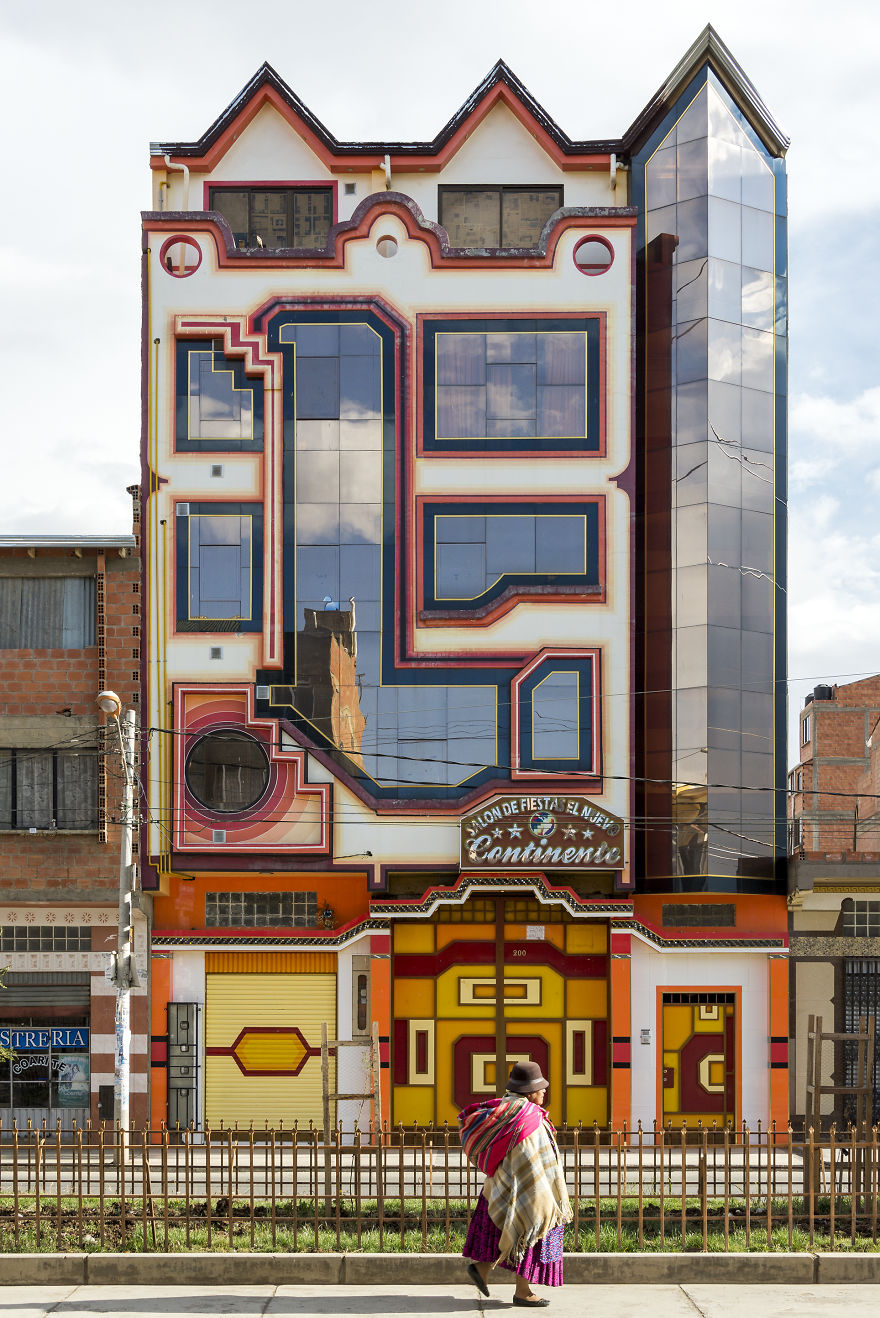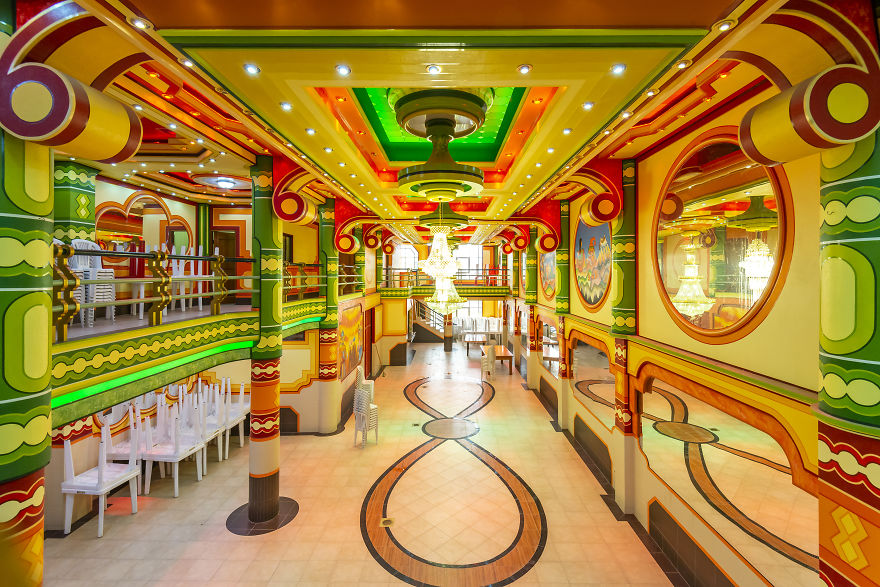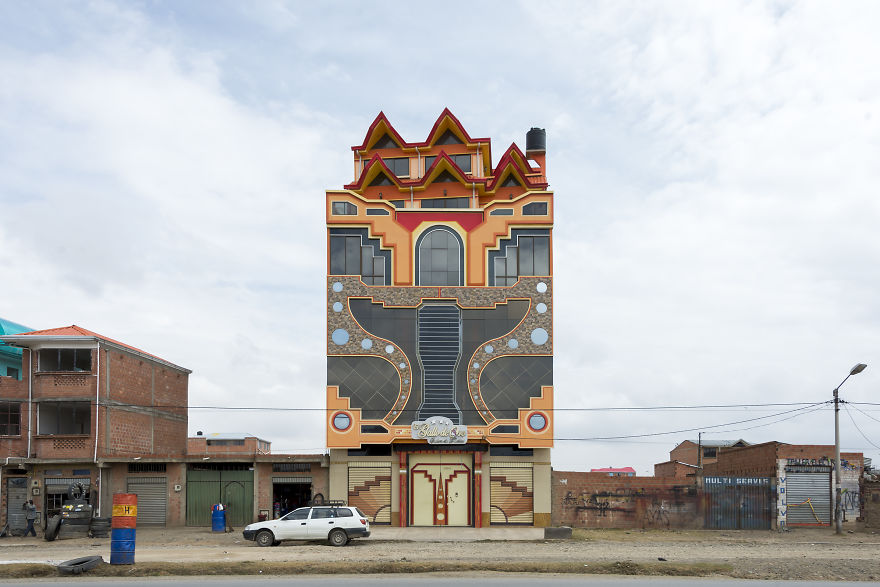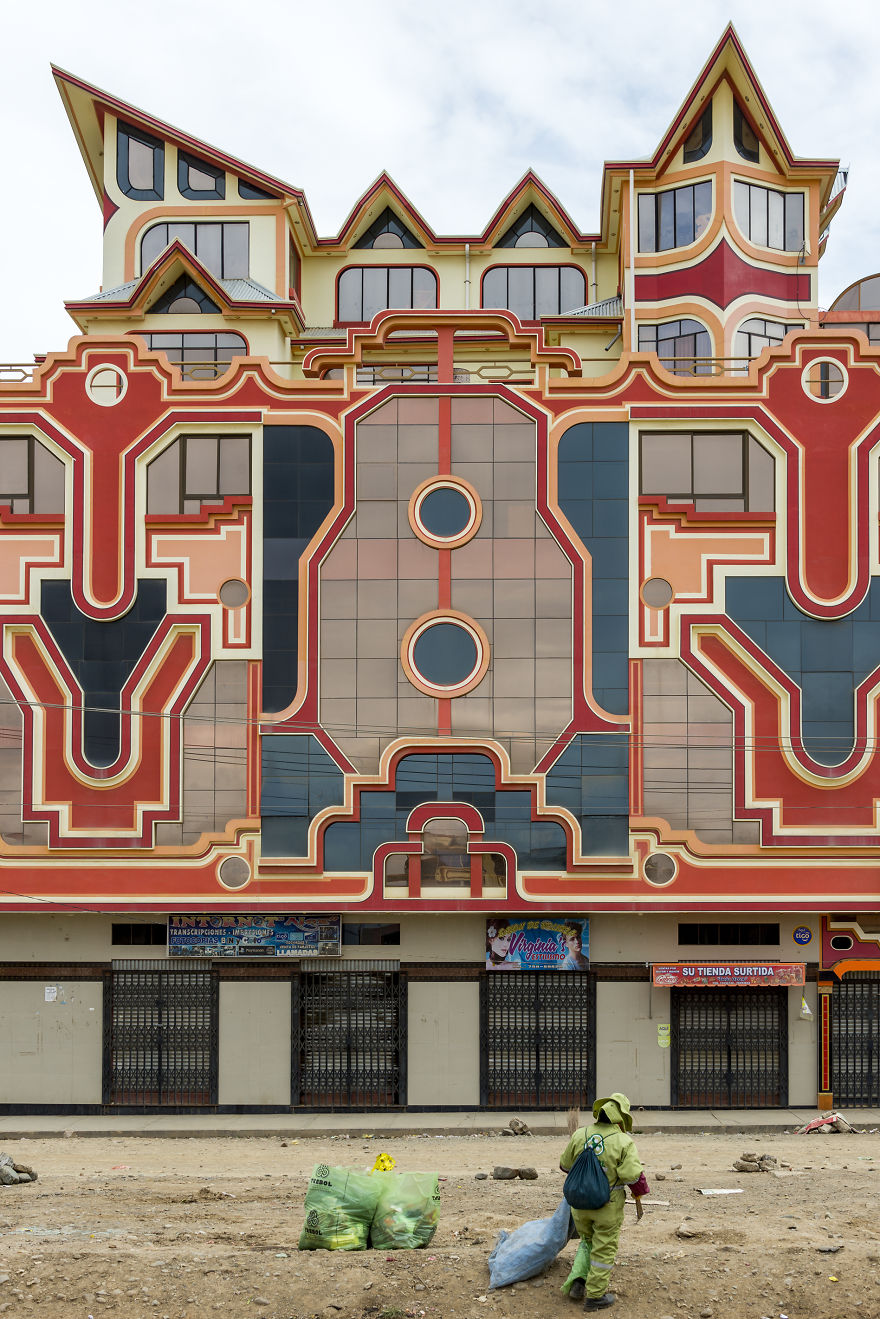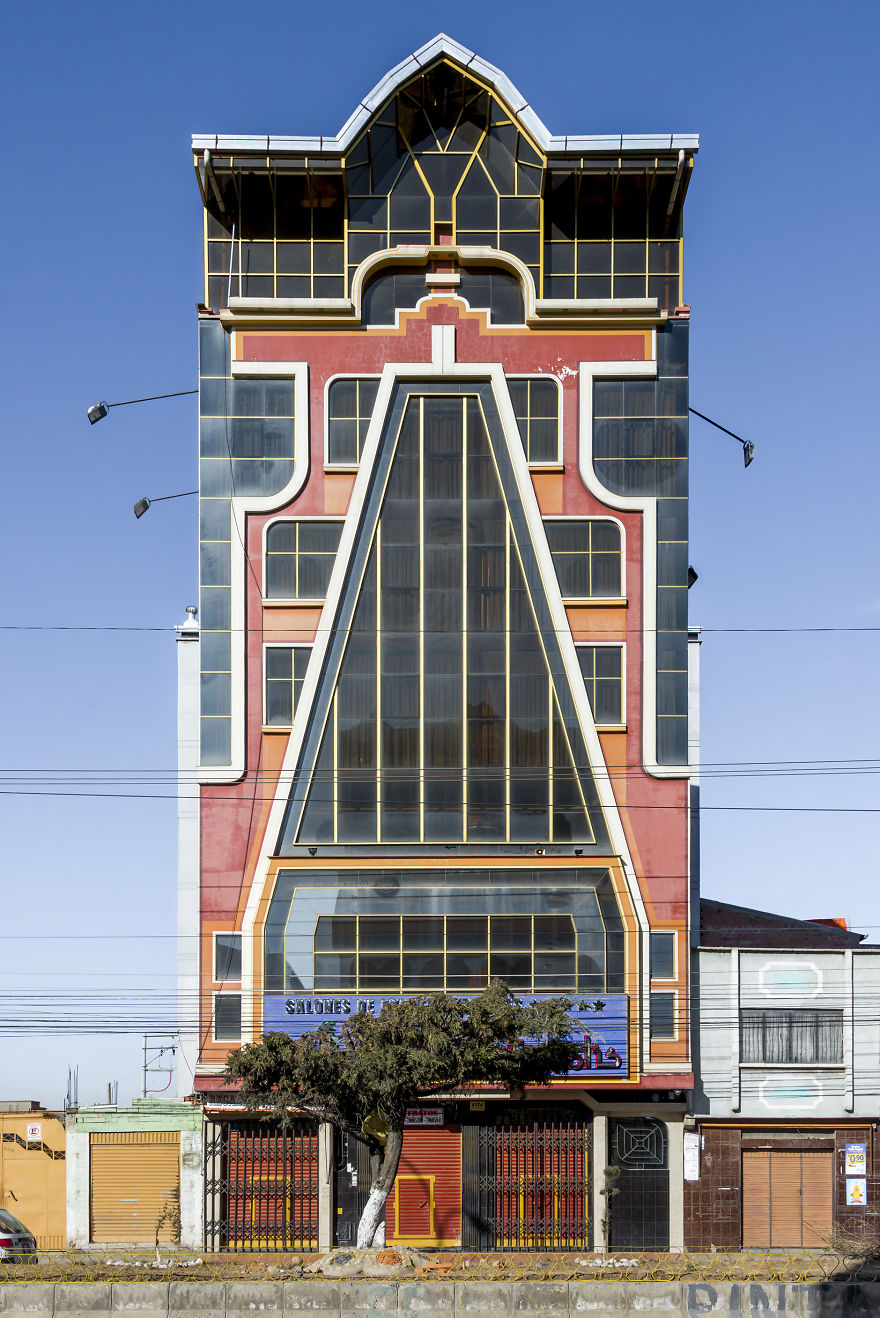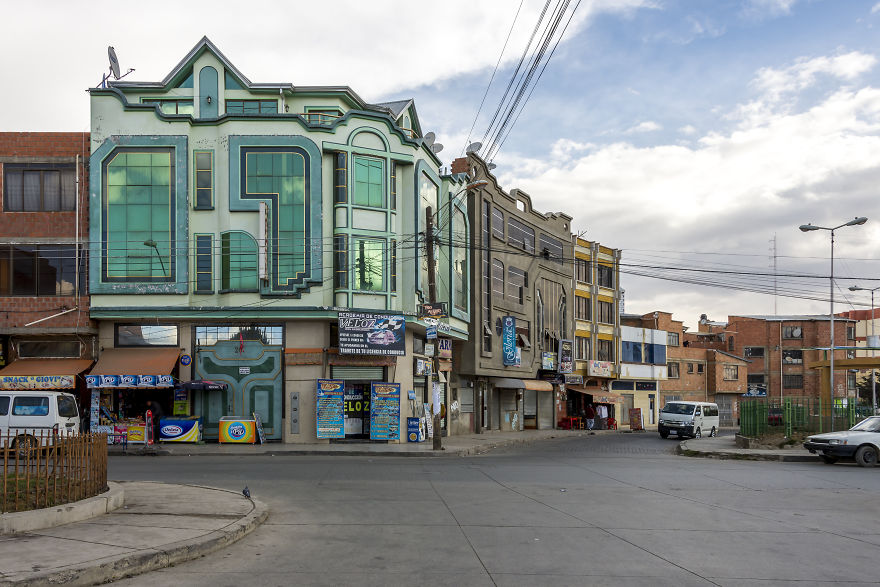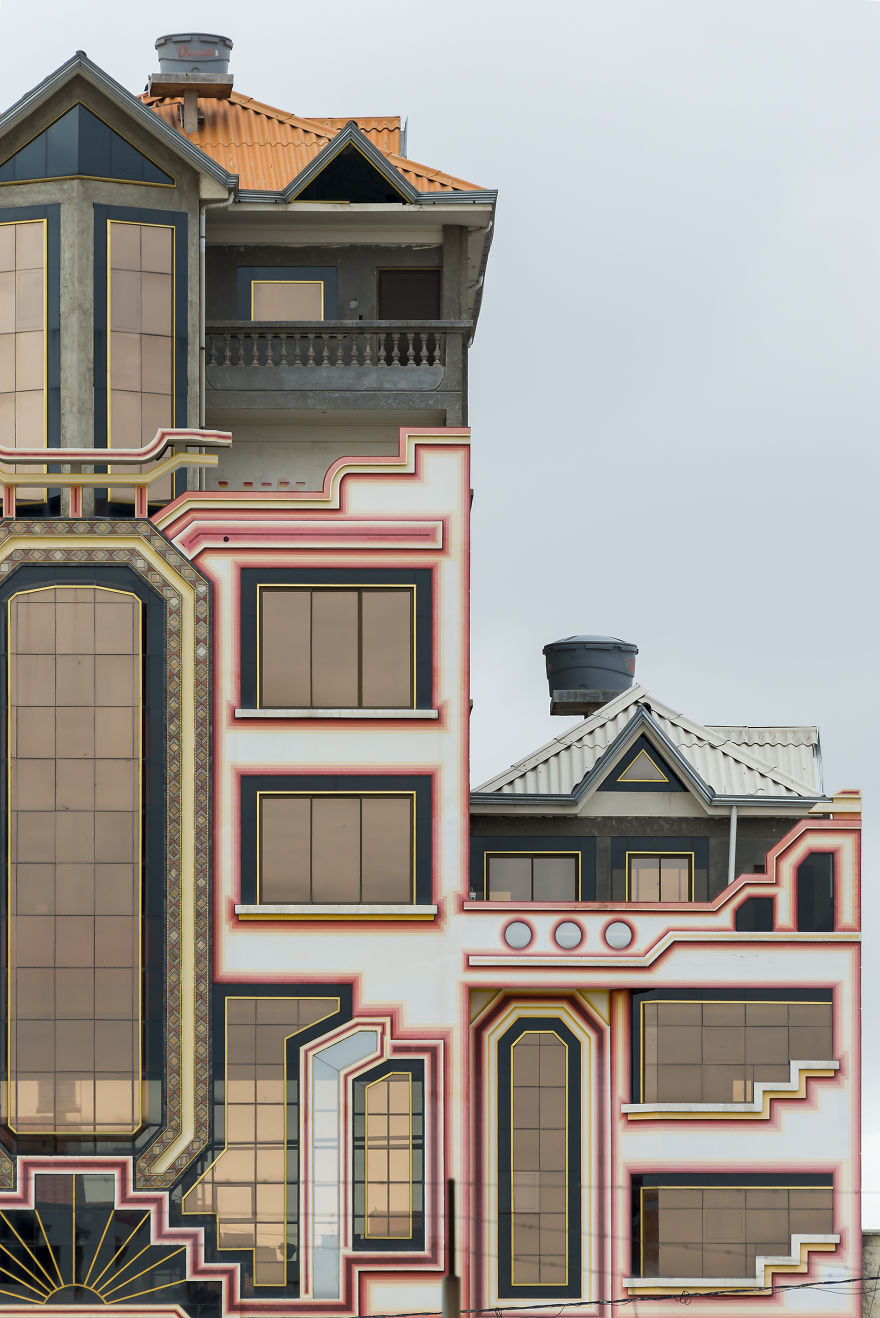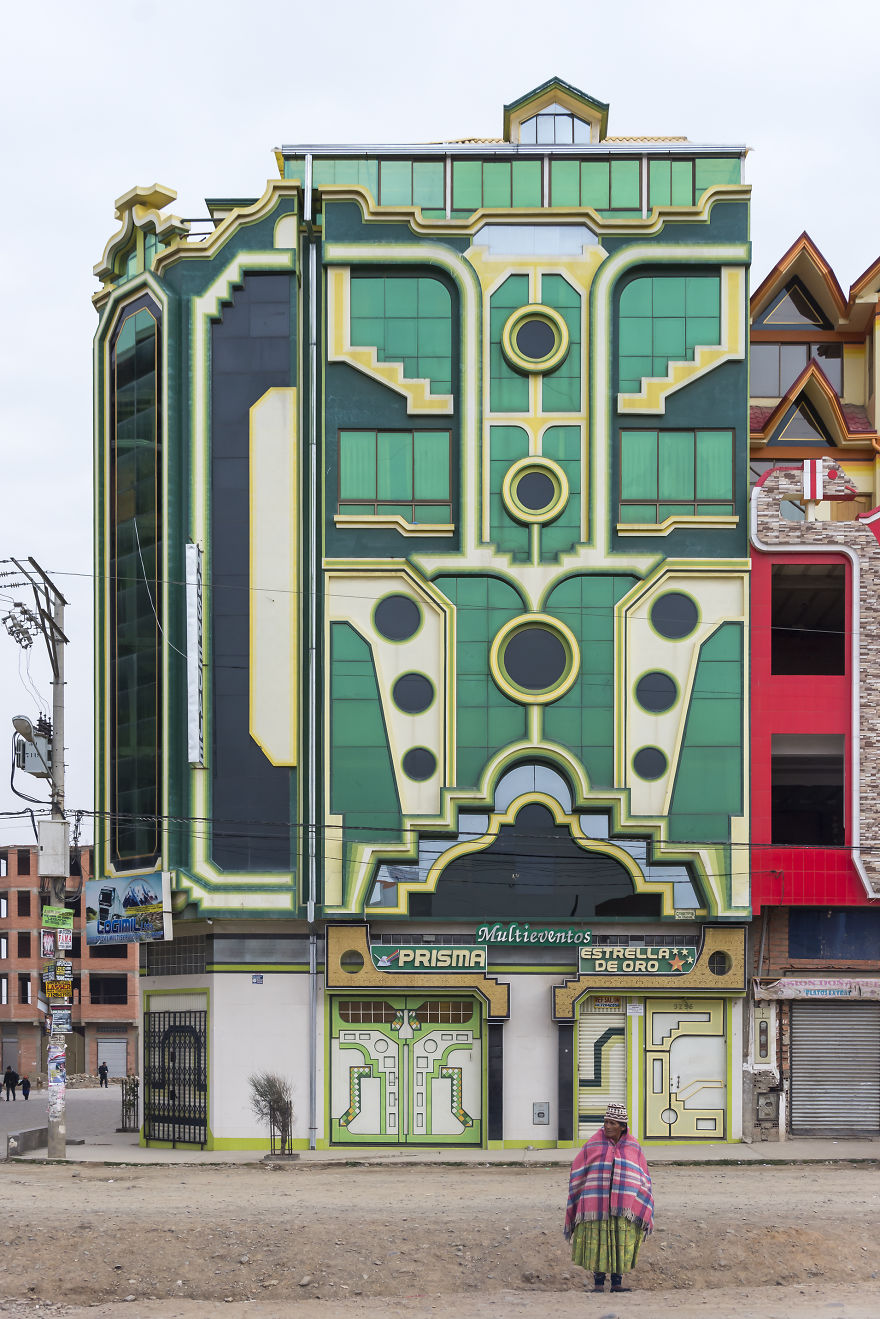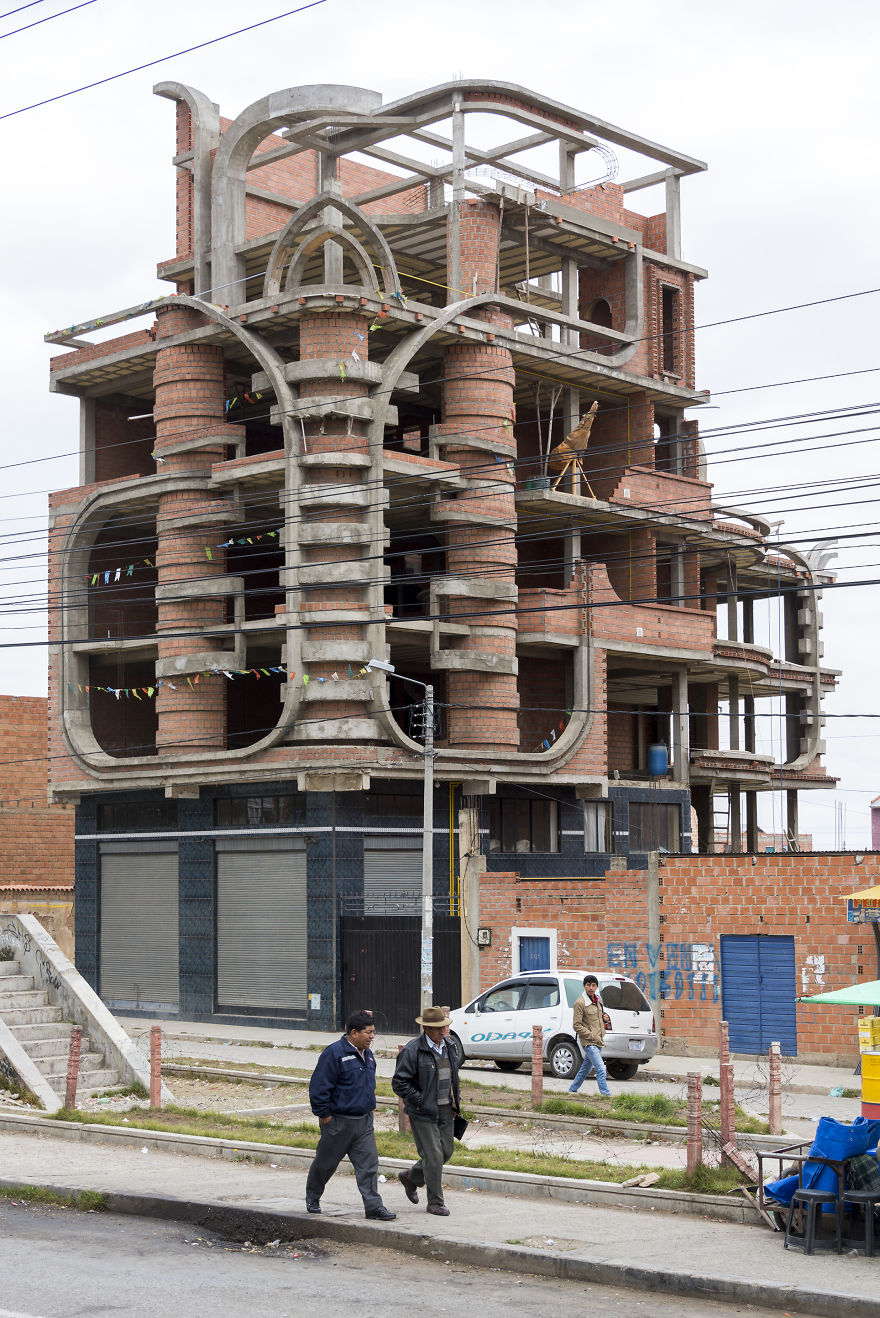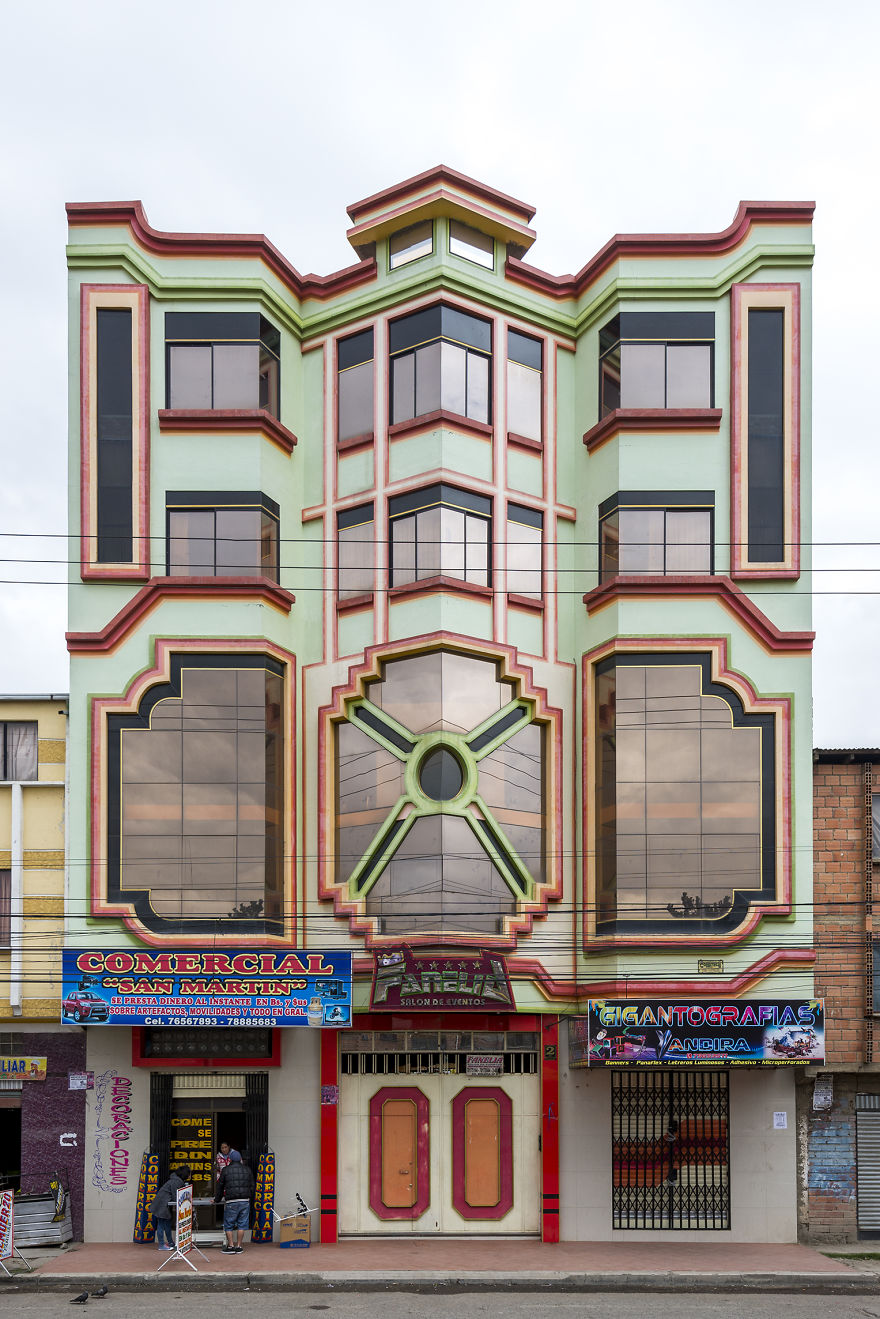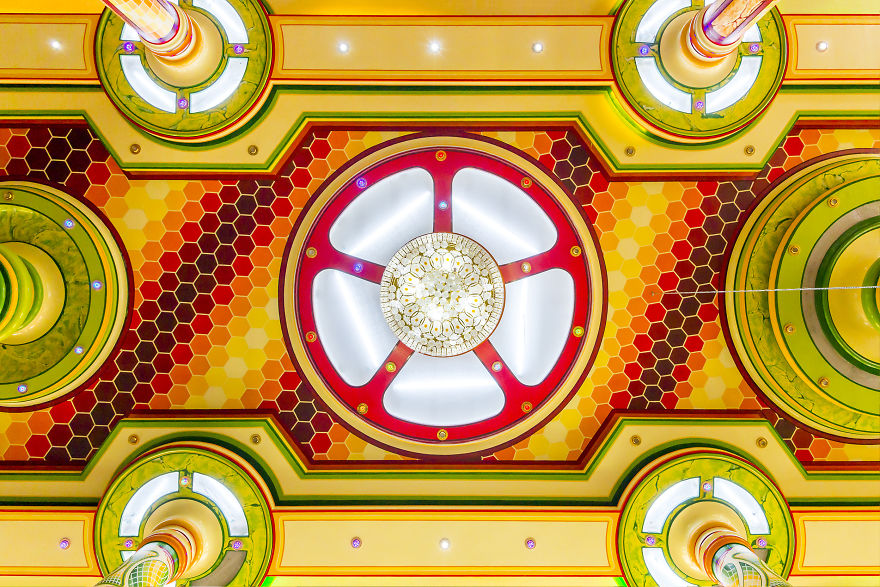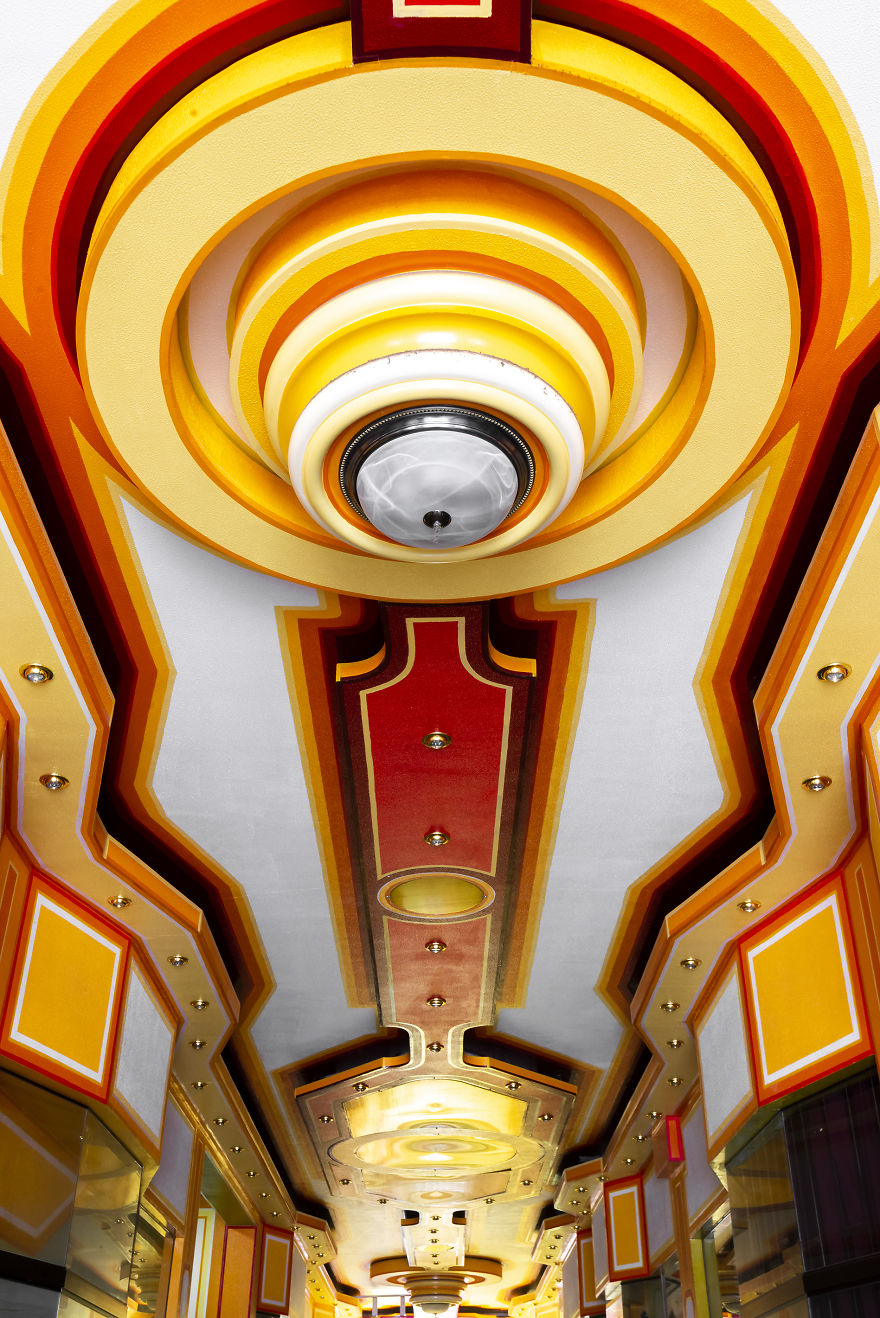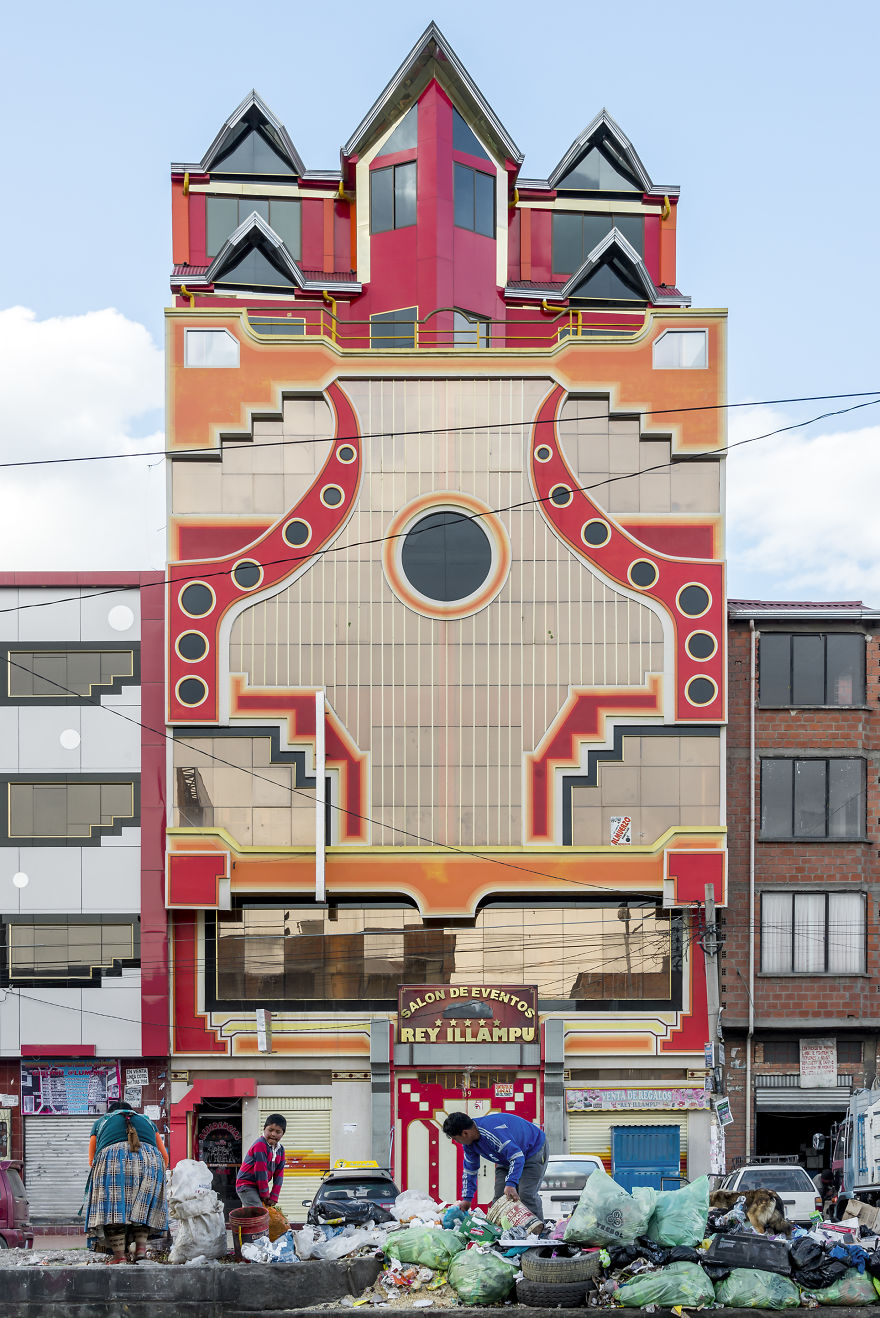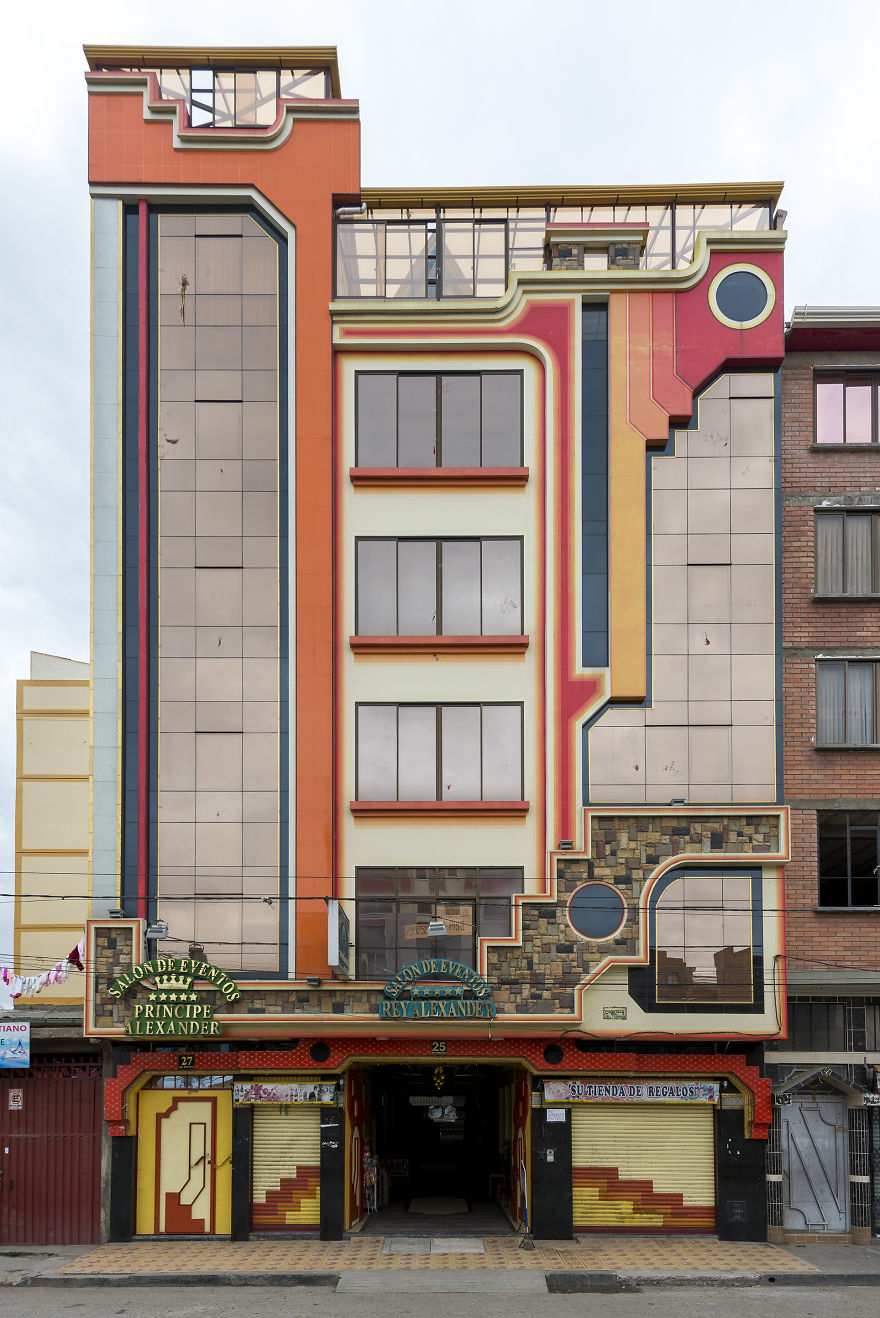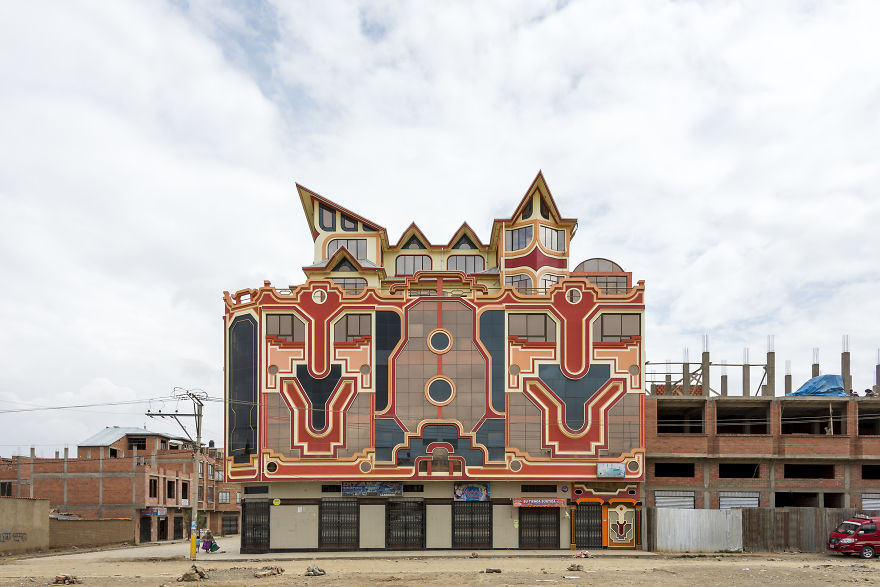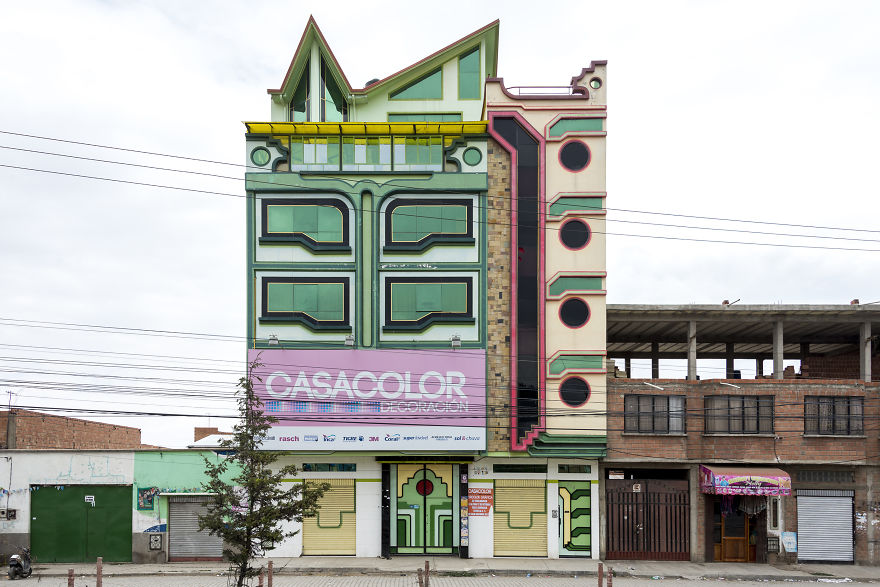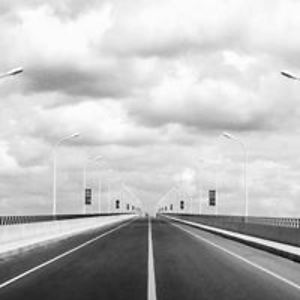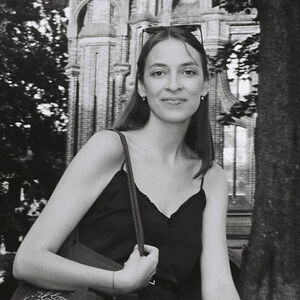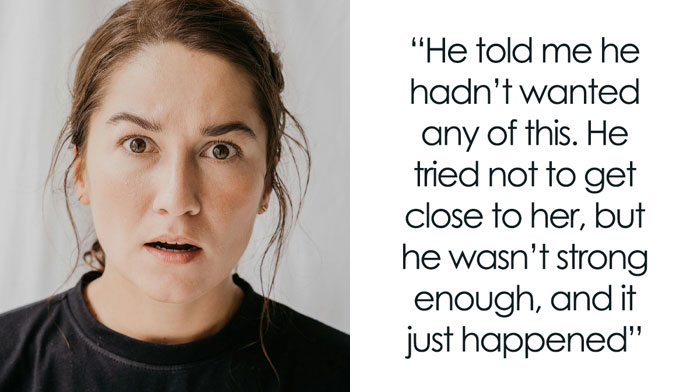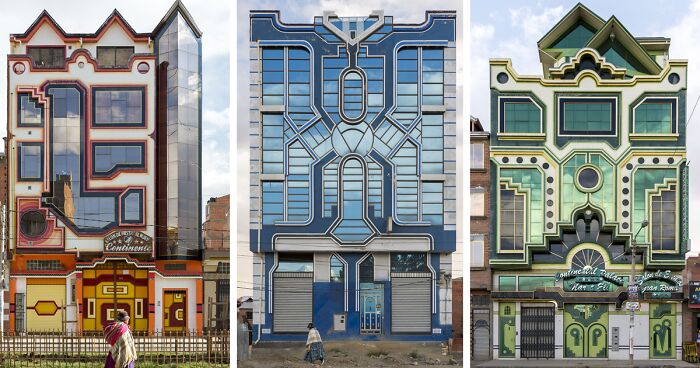
I Retraced The Streets Of El Alto, Bolivia, To Discover A Unique Style Of Architecture Called Cholet (22 Pics)
My name is Yuri Segalerba and I'm an Italian photographer who moved to Berlin 11 years ago, looking for a more vibrant and inspiring environment, caught by the fascination of abandoned industrial areas.
Some years ago, I went to El Alto, a satellite city of La Paz in the Andean Plateau, which is over 4000 meters high, and I found something you couldn't expect!
In this newborn city, where the architecture is characterized by strong use of exposed brick, Aymara natives, coming from the countryside, are now part of the new middle class and there is a new style of architecture to represent them, which introduced some color in the city of El Alto.
These extravagant and colorful Nuevo Andino (New Andean) style buildings are called Cholet, a mix between the words “chalet” and “cholo” - a dismissive racial epithet that is used in some Latin American countries to identify the indigenous population.
These buildings in El Alto became the representation of economic success.
I retraced the streets of El Alto to discover these colorful buildings and photograph them. I focused on the social and architectural contrast they represent, without ignoring the uniqueness of the geometry and chromaticity typical of this style.
More info: Facebook | yurisegalerba.com | Instagram | Tumblr | opensea.io
This post may include affiliate links.
The authorship of this new style can be entrusted to the self-taught architect Freddy Mamani Silvestre and in his wake, other members of the nascent Aymara bourgeoisie who started to build their houses inspired by the colors and forms of indigenous folklore.
The Cholets have a fixed structure: on the first floor there is a commercial activity - butcher's shop, ironmongery's store, bazaar; on the second floor there is the party hall; on the third floor, owners rent apartments to amortize the cost of the building; and on the top floor, the Cholet proper, the home of the owners.
I studied interior design, I enjoyed exploring cities looking for awesome architecture that could inspire me. This exploration brought me to document what I was seeing through pictures. It didn't take long before I understood I was enjoying more the exploration part than the work at the desk in an office. That's how my journey as a photographer began!
South America is an amazing half-continent, but in general, when you are there, you are not really attracted by architecture, making an exception for a bunch of well-known cities.
As soon as I discovered this new style that was deeply connected to the Aymara culture (an indigenous population original to the Andes and Altiplano regions), I was immediately attracted and started to investigate more about it. It's one of the few examples of the expression of a South American indigenous culture through contemporary architecture.
In these buildings, it's easy to recognize a connection between traditional shapes and colors from this culture, it's interesting to notice how the patterns on traditional clothes of the Aymara and their traditional symbology are very similar to the buildings themselves.
I love traveling, I'm used to crossing places and situations. And photography pushes me to step out from the common paths and discover new realities and it allows me to enter them in a much deeper way. That's what I try to bring to people, a different reality seen from the inside. And in the same way, I try to give space to the subjects of my reportages helping them to show the viewer their life. I think this helps a lot to understand different cultures and traditions, and understanding differences is a very important base for tolerance.
These are odd pictures. Buildings I would want to live in but not on those (streets?)
In 3 weeks I'm going again to South America, I will be in a very well-known place for its amazing wildlife and landscapes, but the reportage won't be about nature. To find out more, you will need to wait!
If you like my pictures, you can visit my NFT page to get some of them!
Looks like someone with money invested in poor neighborhoods...Bolivia has little to no middle class ( as in many South American countries) so the contrast is remarkable, as are these fantastic buildings!
Looks like the "Small World" clock at Disneyland if it got turned out into the poorer suburbs of Anaheim.
Strangely, these pictures bring me classic sci-fi vibes. Really good and interesting architecture indeed. And caught up in well made photos.
Thanks a lot Daria! I'm happy you like them!
Load More Replies...Great photos, and great subject also. These could be in Nat Geo. BP needs more stuff like this.
Thanks Otis! Maybe we should send them an email! :D
Load More Replies...About the architect : https://www.archdaily.com/883951/why-freddy-mamani-is-leading-a-new-andean-architecture
Tao and MBZ, please note that not al the buildings in the pictures are from Freddy Mamani. He kind of invented this style, but now a lotof other architects (or even not architects, just people who build up their own house) are interpretating this style in their own personal way
Load More Replies...Strangely, these pictures bring me classic sci-fi vibes. Really good and interesting architecture indeed. And caught up in well made photos.
Thanks a lot Daria! I'm happy you like them!
Load More Replies...Great photos, and great subject also. These could be in Nat Geo. BP needs more stuff like this.
Thanks Otis! Maybe we should send them an email! :D
Load More Replies...About the architect : https://www.archdaily.com/883951/why-freddy-mamani-is-leading-a-new-andean-architecture
Tao and MBZ, please note that not al the buildings in the pictures are from Freddy Mamani. He kind of invented this style, but now a lotof other architects (or even not architects, just people who build up their own house) are interpretating this style in their own personal way
Load More Replies...
 Dark Mode
Dark Mode 

 No fees, cancel anytime
No fees, cancel anytime 






